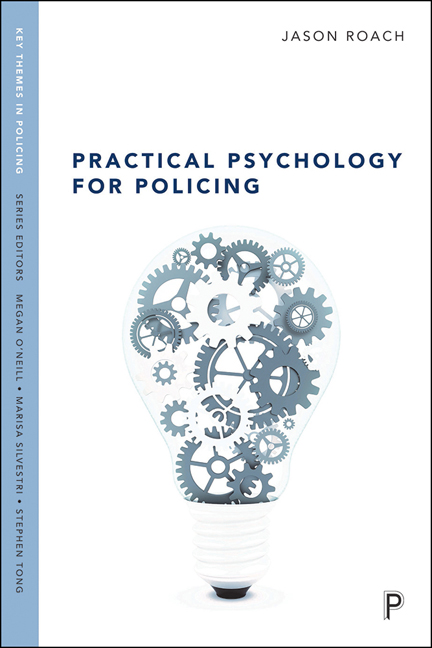Book contents
- Frontmatter
- Dedication
- Contents
- Series preface
- List of figures, tables, and boxes
- Acknowledgements
- 1 Introduction (or unleashing the kraken)
- 2 Psychology and policing: welcome bedfellows?
- 3 Human and police decision-making
- 4 Challenging common police perceptions of career criminals and serious offenders
- 5 Self-Selection Policing
- 6 Psychology, expertise, and improving police officer street-craft
- 7 Psychology and crime prevention
- 8 Psychology and police wellbeing
- 9 Psychology and policing: taking stock and where do we go from here?
- Notes
- References
- Index
5 - Self-Selection Policing
Published online by Cambridge University Press: 17 January 2024
- Frontmatter
- Dedication
- Contents
- Series preface
- List of figures, tables, and boxes
- Acknowledgements
- 1 Introduction (or unleashing the kraken)
- 2 Psychology and policing: welcome bedfellows?
- 3 Human and police decision-making
- 4 Challenging common police perceptions of career criminals and serious offenders
- 5 Self-Selection Policing
- 6 Psychology, expertise, and improving police officer street-craft
- 7 Psychology and crime prevention
- 8 Psychology and police wellbeing
- 9 Psychology and policing: taking stock and where do we go from here?
- Notes
- References
- Index
Summary
Introduction
In this chapter the SSP approach (Roach, 2007a, 2007b, 2017, 2018; Roach and Pease, 2016) will be introduced, whereby it is posited that current police means of identifying active, serious criminals can be enhanced by also focusing on the minor crimes that they commit. The argument made is that a growing body of research shows that if police are encouraged to adopt the SSP approach into their ‘policing armoury’, then more active, serious criminals will be uncovered and brought to justice. A big claim admittedly!
The chapter concludes with some suggestions for how police can best employ and implement SSP and a checklist is provided to help those interested in conducting SSP interventions of their own.
Traditional ways of uncovering bad guys
Approaches to policing do not come much simpler than SSP. Its purpose is the identification of active, serious offenders by targeting the more minor criminal offences that they also commit, however minor these may be. It can be argued that the self-selection approach rests on firmer ground ‘legally’ than the targeting of ‘usual suspects’ for example because of the similar way they commit the same type of crime (that is, modus operandi) or based simply on the same type of previous conviction(s) (Roach and Pease, 2016). The SSP approach seeks to identify those minor, often routine, offences which stand as reliable indicators of more serious current criminality (Roach, 2007a, 2007b; Roach and Pease, 2016; Roach, 2018). SSP is concerned therefore with the identification of those minor offences that are disproportionately committed by active, serious offenders (that is, most frequently compared with other minor offences).
Chiming deliberately with the previous chapter, SSP is based upon the simple premise that ‘those who do big bad things also do little bad things’ (Roach, 2007a). The logic being that if police scrutiny of certain, specific, minor offences is increased then this is likely to assist in the identification of active, serious criminals. By certain minor offences, I mean those committed most frequently by active, serious offenders, as it goes without saying that a vast majority of minor (or lesser) offences will be committed by the likes of you and I and not by ‘heavy-duty offenders’.
- Type
- Chapter
- Information
- Practical Psychology for Policing , pp. 52 - 65Publisher: Bristol University PressPrint publication year: 2023

